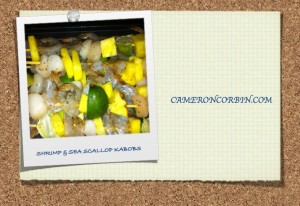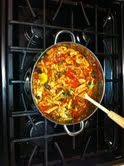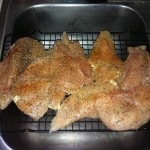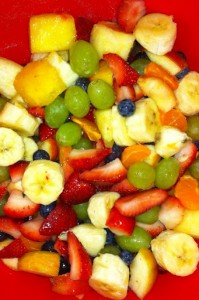
- Summer Snack Attack! 23 Easy, Beach-Friendly Snacks Under 150 Calories
- SHOW THE WORLD YOUR BEST MOVES AND WIN
- The Superfood Sleuth: An Interview with Shakeology® Co-Creator Darin Olien
- Can You Build Muscle as a Vegan? (And 9 Other Questions About Going Meatless)
- Jeremy Y. Lost 180 Pounds with P90X® to Be There for His Kids
- Recipe: Habanero Vegan Chili
No matter what body of water you’re heading to this summer—beach, lake, your local pool—or even some neighborhood kid’s Slip ‘N Slide®—you’ll be glad you packed these 23 delicious, nutritious snacks, each of which is 150 calories or less. If you’re looking to get a balance of protein, fat, and carbs for each snack, halve the portions and combine nuts, cheese, or lean meats with the fruit-forward treats!

Not only will these keep you from craving that double scoop of mint chocolate chip, they’ll help keep your hunger at bay while you’re in and out of the water or soaking up the sun. Just don’t forget the sunscreen.
Got a cooler? If you’re packing an ice chest, try these refreshing treats that will cool you down when it feels like you’re about to melt in the afternoon sun.
- Frozen grapes. With a taste just like sorbet, frozen grapes are the snack that got me through the dog days of many a New York City summer. Just rinse some grapes, toss them in a plastic bag, and throw them in the freezer. Hours later, you’ll have a chilly, low-calorie snack. 1 cup of grapes equals 62 calories.
 Jicama salad. Chop 1 cup of jicama and add a splash of lemon juice and a pinch of salt for a tangy, crunchy salad. Those 50 calories will give you a blast of energy to get back in the pool for one more round of Marco Polo.
Jicama salad. Chop 1 cup of jicama and add a splash of lemon juice and a pinch of salt for a tangy, crunchy salad. Those 50 calories will give you a blast of energy to get back in the pool for one more round of Marco Polo.- Mediterranean salad. Go Greek and dice 1 medium tomato, half a red onion, and 1 cucumber. Top with 1 ounce of low-fat feta cheese and a pinch of salt. Trust me, it tastes way more decadent than its 146 calories.
- Dates and prosciutto. If you want something with more of a savory flavor, wrap 1 piece of prosciutto around a date for a bite that combines sweet and salty. Your taste buds will love you for it. Each one is approximately 50 calories.
- Watermelon twist. Even on its own, watermelon is such a great summer food. It’s low in calories, full of water, and high in vitamin C. To add some protein and fat, top 1 cup of watermelon with 1 ounce of crumbled feta for a treat less than 100 calories.
- Caprese. The Italians know what they’re doing when it comes to eating healthy. Moderation, moderation, moderation! For this savory snack with a little bite, top 1 ounce of fresh mozzarella cheese with 1 cup of cherry tomatoes and 1 tablespoon of your favorite balsamic vinegar.
- Shakeology®. Why not bring the Healthiest Meal of the Day® to the beach? Just mix half of a serving of your favorite flavor with water for a nutrient-packed snack that’s 70 to 85 calories.
- Stuffed tomatoes. Tomatoes are packed with cancer-busting antioxidants, and when they’re stuffed with this vegetarian-friendly recipe for olive and quinoa salad from Cookie + Kate, they’ve also got the protein and fat to keep you going all day. The easy-to-make snack is just 112 calories a serving.
- Berries. Feeling the heat? Munch on 1 cup of strawberries, raspberries, or blueberries for an antioxidant-friendly, refreshing treat that’s under 100 calories. Simple and delicious!
 Tabouleh. This classic Middle Eastern salad is made from bulgur, tomato, parsley, lemon juice, mint, garlic, and salt. Make your own or pick up some from your local deli. A cup is approximately 150 calories or less.
Tabouleh. This classic Middle Eastern salad is made from bulgur, tomato, parsley, lemon juice, mint, garlic, and salt. Make your own or pick up some from your local deli. A cup is approximately 150 calories or less.- Gazpacho. This tomato-based soup is like a soup version of V8®, only without the preservatives and sodium. It’s jam-packed with tons of vegetables and will help you feel hydrated even on the hottest of days. Follow this recipe and you’ll have a low-cal soup in less than 30 minutes.
- Pickles. Want a practically calorie-free snack? Munch on some pickles! They’re sweet and salty, and their delectable crunch makes them a fun snack to eat while you’re sitting on the shore or lounging poolside.
- Gelatin dessert. For a sweet treat, enjoy the jiggle of a gelatin-based dessert like JELL-O® without adding extra jiggle to you at 80 calories or less. Though many products on the market have artificial ingredients, you can find better versions at natural food stores like Whole Foods and Trader Joe’s®.
Going cooler-free? These snacks will keep your hunger at bay for when you’re not planning to bring a cooler.
- Cinnamon apple. Sprinkle an apple with cinnamon for a treat that tastes like apple pie, but with only 70 tiny calories and no added sugar.
 Juicy fruit. Try 1 cup of unsweetened applesauce with a hint of cinnamon for a 100-calorie snack. Just make sure to read the ingredients, as many applesauce brands contain added sugar or high-fructose corn syrup.
Juicy fruit. Try 1 cup of unsweetened applesauce with a hint of cinnamon for a 100-calorie snack. Just make sure to read the ingredients, as many applesauce brands contain added sugar or high-fructose corn syrup.- Nuts. A handful of 40 pistachios or 20 raw almonds will provide you with the protein and fat your body needs to fuel your fun in the sun.
- Olives. Get some healthy fats into your system by munching on 16 olives! Choose pitted ones to leave yourself with less to clean up.
- Peanut, almond, or cashew butter. For a super quick snack, grab a spoonful of nut butter. This protein-rich treat will give you energy. Even the all-natural versions have that great blend of salty and sweet for just 95 calories.
- Roasted chickpeas. Mix together olive oil, spices, and chickpeas on a baking sheet, roast them in your oven for 35 minutes, and you’ll have a guilt-free snack high in fiber and antioxidants that’s approximately 150 calories per quarter-cup serving.
- Tempeh. I first discovered this weird-looking food at the farmer’s market when I bought it on a whim. It’s made from fermented soy, so it’s high in protein, probiotics, and calcium. It’s less processed than tofu and has a nutty flavor that makes it yummy on its own. A half-cup is approximately 150 calories.
- Bell pepper with balsamic vinegar. Drizzle 1 tablespoon of balsamic vinegar over sliced bell peppers for a treat high in vitamin C and low in calories. 1 marinated bell pepper is equal to about 40 calories.
- Avocado toast. Mash 1/4 of an avocado onto 1 slice of whole wheat or sprouted-grain toast and sprinkle it with Espellete pepper for a 120-calorie omega-3 friendly snack. Here’s Team Beachbody’s recipe for this snack.
 Water. Don’t forget about hydration! If you’re going to be in the sun, it’s critical to make sure you’re replenishing your water supply whether or not you’re splashing around in the waves. Unless you want a midday headache, that is. Drink iced cold water, iced tea, coconut water, or sparkling water to rehydrate.
Water. Don’t forget about hydration! If you’re going to be in the sun, it’s critical to make sure you’re replenishing your water supply whether or not you’re splashing around in the waves. Unless you want a midday headache, that is. Drink iced cold water, iced tea, coconut water, or sparkling water to rehydrate.



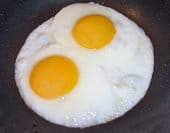 I was on a weekend trip with some friends recently and one of my friends was cooking breakfast for the whole group. I went over to see what he was cooking and saw he was getting ready to make a big batch of eggs.
I was on a weekend trip with some friends recently and one of my friends was cooking breakfast for the whole group. I went over to see what he was cooking and saw he was getting ready to make a big batch of eggs. And here’s where it gets even more interesting…
And here’s where it gets even more interesting…